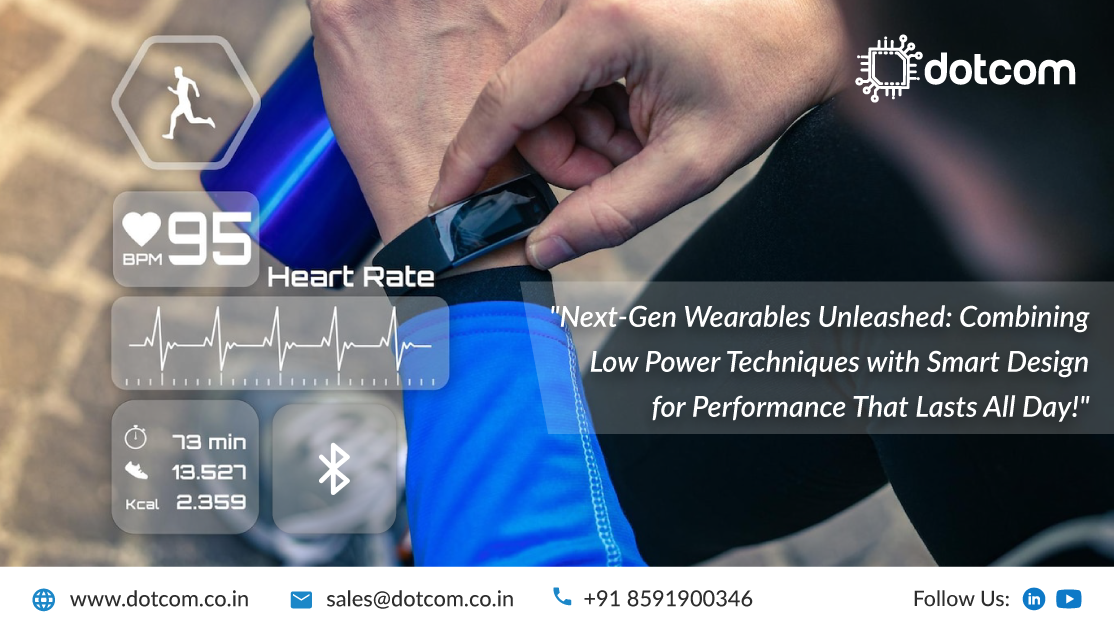Powering Smart Wearables: Techniques to Optimize Battery Life and Performance
Featured Blogs
Powering Smart Wearables: Techniques to Optimize Battery Life and Performance
In today’s era of continuous connectivity and digital wellness, wearable devices such as smart watches, fitness trackers, and health monitors have become everyday essentials. However, a major hurdle in wearable technology is their limited battery capacity. As these gadgets become more compact and intelligent, managing energy consumption effectively is key to enhancing usage time and delivering a seamless user experience. This is where power optimization strategies for wearables come in—enabling efficient performance without sacrificing essential features.
Categories

Powering Smart Wearables: Techniques to Optimize Battery Life and Performance
Why Power Optimization Matters in Wearables
Unlike smartphones or laptops, wearables need to be lightweight, compact, and energy-efficient, all while continuously collecting and transmitting data. Traditional power methods fall short, as frequent recharging disrupts usability. Optimizing power usage ensures these devices run longer on a single charge, operate seamlessly, and enable 24/7 tracking of health metrics and user activity.
Key Low-Power Techniques Used in Wearable Devices
1. Sensor Optimization
- Duty Cycling – Sensors are activated only when required, reducing active time.
- Adaptive Sampling – The device dynamically adjusts how often it collects data based on user movement or conditions.
-
Low-Power Sensors – Devices now use energy-efficient sensors that consume minimal current.
2. Processor Management
- Dynamic Voltage and Frequency Scaling (DVFS) – The processor reduces its power use when full performance isn’t needed.
- Sleep Modes – Devices switch to ultra-low power states when idle.
-
Efficient Task Scheduling – Tasks are managed to avoid unnecessary processor wake-ups.
3. Low-Power Communication Protocols
- Bluetooth Low Energy (BLE) – Enables data transmission using minimal power.
-
Data Compression – Reduces the amount of data being transmitted, saving power.
4. Energy Harvesting
-
Solar or Kinetic Energy – Some wearables now capture energy from the environment to extend battery life.
5. Battery Innovations
- Solid-State Batteries – Offer higher energy density with improved safety.
-
Lithium-Sulfur Batteries – Under research for even better longevity and lighter weight
Benefits of Power Optimization in Wearables
✅ Extended battery life
✅ More compact, lightweight designs
✅ Continuous health monitoring
✅ Lower charging frequency
✅ Improved user satisfaction
✅ Reduced heat generation
Real-World Applications of Low-Power Techniques
- Fitness Bands – Using BLE and duty-cycled sensors to track steps and heart rate all day.
- Medical Wearables – Remote health monitors using adaptive sampling for long-term usage.
-
Smart watches – Optimized firmware to switch between high and low-performance modes as needed.
How Dotcom IoT Powers Energy-Efficient Wearables
At Dotcom IoT LLP, we specialize in developing low-power embedded solutions tailored for wearables. Our approach focuses on optimizing every layer of the stack—hardware, firmware, and communication.
Here’s how we contribute:
⚡ Custom Ultra-Low-Power Hardware Design : Tailored sensor and MCU architectures for minimal energy draw.🔋 Power-Aware Firmware Development : We implement intelligent sleep modes and adaptive sensor control.
📶 Optimized BLE Integration : Ensuring reliable yet energy-saving wireless communication.
📈 Real-Time Data Analytics : Enabling smart task scheduling and efficient data usage
By combining these techniques, we help brands deliver wearables that last longer, perform better, and delight users without compromising on features.
Recent Post
Get In Touch With Us
Are You Ready To Grow Your Business With Us?
Drop us a message
- Dotcom IoT : Headquarter
FW 3040, Bharat Diamond Bourse, BKC, Bandra Kurla Complex, Mumbai Suburban, Mumbai, Maharashtra, 400051, India. - Dotcom IoT : R&D Centre
410/4th Floor, Sunshine Commercial Complex, Hans Society, Mota Varachha, Surat, Gujarat 394101. USA
20W 47th ST, Suite#1501-A New York, NY 10036-3735.South Korea
369, Sangdo-Ro, Venture Center, Soongsil Univ., Dongjak-Gu Seoul, South Korea.- +91 85919 00346
- sales@dotcom.co.in





Tag:
#Wearable IoT#Power OptimizationShare:
Tanvi Kukadiya is a Business Development Executive at Dotcom IoT LLP, specializing in strategic content, B2B outreach, and market research for IoT-based solutions.